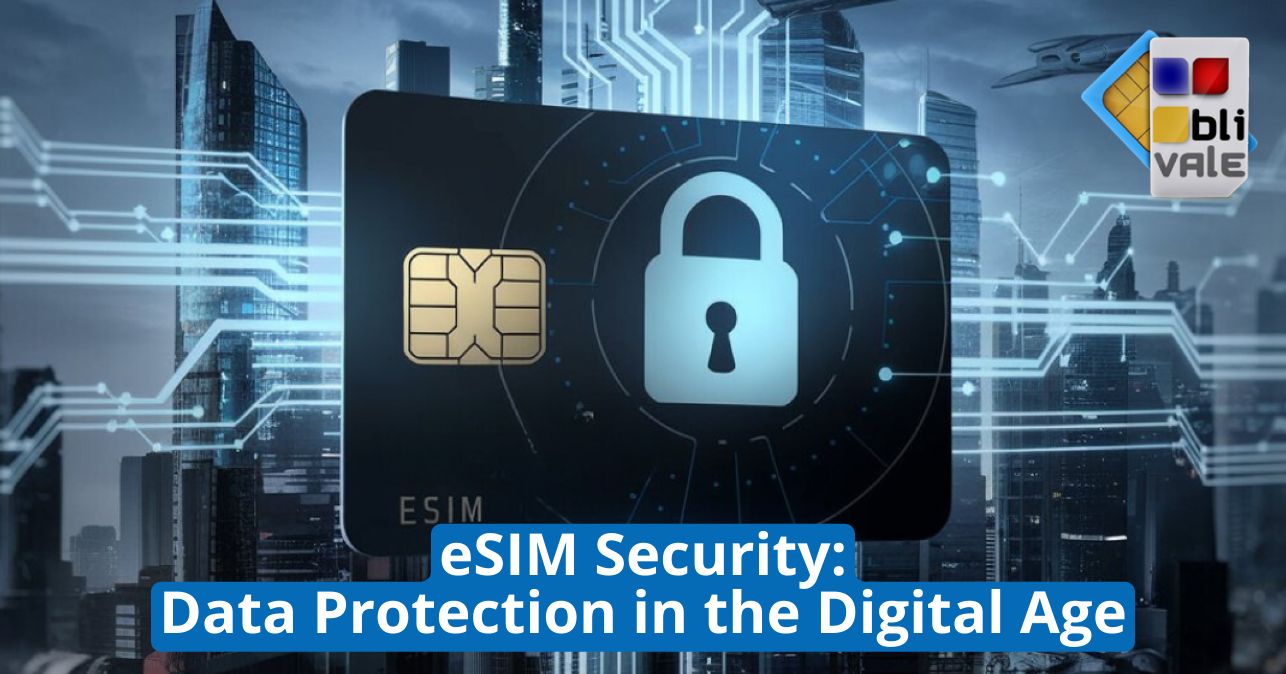In today's digital age, personal data security has become a top priority for every user. With the emergence of eSIMs, or embedded SIM cards, we are seeing a significant change in the way we connect to the Internet and manage communications. While eSIMs offer many benefits, they also raise concerns about data security.
In this article, we will explore in detail the security of eSIMs, the risks associated with them, and the protective measures taken to safeguard user information.
What are eSIMs?
eSIMs are a digital form of traditional (or physical) SIM cards. Unlike traditional SIMs, which must be manually inserted into the device, eSIMs are already integrated into devices such as smartphones, tablets and smartwatches. This allows users to activate and manage the connection directly from the device in a simple and immediate way. The rapid diffusion of this technology is evident: according to recent estimates, the number of devices equipped with eSIMs is expected to reach billions in the coming years. The reasons for this rapid growth include the flexibility and convenience that eSIMs offer, such as the ability to easily switch between operators.
Advantages of eSIMs
eSIMs offer several advantages over traditional SIM cards, making them an increasingly popular choice among consumers:
One of the main benefits is undoubtedly flexibility. With an eSIM, users can change operators without having to visit a physical store or wait for a new SIM card to arrive. This is especially useful when traveling abroad, as a local plan can be activated in a few simple steps.
Convenience is another plus. There is no need to deal with a physical SIM card, as everything happens digitally. This is especially beneficial for those who use multiple devices or frequently change operators.
Le eSIM possono anche portare a un risparmio economico. Gli operatori possono ridurre i costi di produzione e distribuzione delle SIM fisiche, il che potrebbe tradursi in tariffe più competitive per gli utenti.
eSIMs enable greater connectivity. When traveling internationally, activating new connections becomes easier, allowing users to stay connected without difficulty.
However, despite these obvious advantages, it is also essential to consider the potential security risks associated with this innovative technology.
eSIM Security Risks
Because they are based on digital technology, eSIMs may present vulnerabilities that are not present in SIM cards. Below are some of the main risks associated with the use of eSIMs:
Unauthorized access to data is one of the main fears of users. Hackers may try to access sensitive information such as phone numbers and personal data through phishing attacks or malware. This risk is amplified by the increasing sophistication of the techniques used by cybercriminals.
eSIM Cloning. Hackers may attempt to duplicate an eSIM to gain access to a user's sensitive information. This type of attack can lead to identity theft and other legal issues.
There is a possibility of communications interception. Communications between the user's device and the network may be vulnerable to attacks by malicious individuals seeking to capture confidential information or private communications.
Attacchi di denial-of-service (DoS) rappresentano un ulteriore rischio. Questi attacchi mirano a rendere inaccessibili le connessioni degli utenti, bloccando l'accesso alla rete e causando notevoli disagi.
eSIM Protection Measures
Per contrastare i rischi associati alle eSIM, sono state implementate diverse misure di sicurezza:
La crittografia dei dati è una delle prime linee di difesa. Le informazioni trasmesse attraverso le eSIM sono protette da algoritmi complessi che rendono difficile l'accesso non autorizzato ai dati sensibili.
BLIVALE ESIM AND SIM CARDS USE ENCRYPTION NOT ONLY OF DATA BUT ALSO OF PHONE CALLS
Autenticazione a più fattori è sempre più comune. Molti dispositivi richiedono più metodi di verifica per accedere alle informazioni della eSIM, aumentando così il livello di sicurezza complessivo.
Regular updates are essential to maintain the security of technology. Manufacturers and operators constantly release software updates to fix any vulnerabilities discovered in the system.
Companies use sophisticated fraud monitoring systems to identify suspicious activity and prevent potential identity theft. These measures help ensure that users can surf the web with greater peace of mind.
eSIM Security Statistics
The increased adoption of eSIMs has also raised questions about their security. According to recent studies, many consumers expect eSIMs to offer the same level of protection as traditional physical SIM cards. Additionally, the introduction of 5G technology, which supports eSIMs, has brought significant improvements in security compared to previous networks.
A report found that over 70% of users feel anxious about protecting their personal information when using an eSIM. This shows how important it is for companies to provide clarity on the security measures they have in place.
Conclusion
eSIMs represent a significant innovation in the way we manage our digital connections. While they offer significant advantages in terms of flexibility, convenience and economy, it is essential to be aware of the risks associated with their security.
With measures such as advanced encryption, multi-factor authentication, and regular software updates, manufacturers are working tirelessly to ensure that user data is protected to the fullest. With the increasing use of eSIMs in everyday life, it is crucial that users understand both the benefits and risks.
Solo attraverso una maggiore consapevolezza e l'adozione di buone pratiche possiamo sfruttare appieno il potenziale delle eSIM mantenendo al sicuro i nostri dati personali. È importante che ciascuno di noi prenda parte attiva nella protezione delle proprie informazioni per navigare serenamente in questo mondo digitale sempre più interconnesso.









